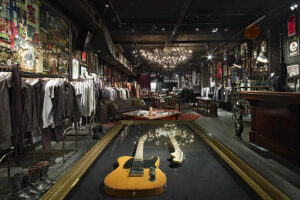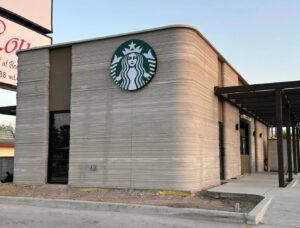In an era where design increasingly blurs the line between the digital and the physical, David Delahunty continues to masterfully mine that borderland for inspiration. His MS Paint Make-Up Kit is a stroke of conceptual genius—equal parts absurd, nostalgic, and surprisingly relevant. The kit doesn’t just nod to a beloved digital relic—it reimagines Microsoft Paint, that humble software icon from the early GUI days, as a tool for real-world transformation.
A Kit That Mirrors Our Interface Obsession
At first glance, the MS Paint Make-Up Kit looks like a novelty item. It features a reflective “canvas” that doubles as a mirror, a paintbrush lifted right out of a beginner’s art set, and color swatches mimicking the crude pixel palettes of old-school software. The entire aesthetic leans heavily on the clunky interface nostalgia that anyone born before 2000 knows like a second language: the chunky borders, the pixelated icons, the color wheel that looked like a kindergarten toy.
But beneath the kitsch is a clever critique—or perhaps celebration—of how software aesthetics have permeated our visual culture. The kit asks a sly question: why not extend our interfaces into the rituals of our daily lives?
With the canvas-as-mirror metaphor, Delahunty isn’t just offering a clever pun. He’s reflecting (quite literally) how digital tools like MS Paint shaped our visual sensibilities. For many budding creatives, MS Paint was the first playground—a crude but empowering platform where imagination met interface. That same interface now comes full circle, rendered as a physical object meant for self-expression through makeup.
Digital Nostalgia as Physical Commodity
This is far from Delahunty’s first foray into interface nostalgia. His previous projects have included an Apple “beach-ball” tennis ball—a nod to the dreaded macOS loading icon turned into a physical object used in a completely different, tactile context. What links all these projects is Delahunty’s instinct for taking intangible digital metaphors and re-rendering them into tangible, often humorous artifacts.
The MS Paint Make-Up Kit fits squarely within that lineage. But where the Apple beach-ball tennis ball trades on frustration and glitch culture, the make-up kit taps into joy and childhood memory. It functions as both design satire and sincere homage. There’s absurdity in the execution, yes—but also a genuine affection for the source material.
In this way, Delahunty is participating in a growing design movement that reinterprets outdated or defunct UI elements into usable objects. This “interface nostalgia” isn’t just a trend—it’s a cultural impulse. As software changes ever faster, the interfaces we grew up with become cultural artifacts, and eventually design cues. Delahunty just gets there quicker, and funnier, than most.
Graphic Designers: The Ideal Target
The real brilliance of this concept lies in its targeted appeal. The MS Paint Make-Up Kit is aimed squarely at graphic designers—the very audience most likely to appreciate the layers of irony. These are the people who not only spent time playing with Paint as kids, but who now live and breathe in Adobe Creative Cloud or Figma. For them, the transformation of the MS Paint UI into a personal grooming kit is more than a gag; it’s a celebration of their journey from curious doodler to professional visual thinker.
In many ways, the kit is a visual pun—designer humor made tactile. It mimics the form and logic of a makeup kit, only to subvert it with a lo-fi aesthetic straight out of Windows 95. The brush you’d use to contour is styled like a tool from a software toolbar. The swatches aren’t fine cosmetics—they’re flat, pixel-dense rectangles reminiscent of the primitive RGB palette that defined early desktop art. It’s this layering of references that makes the concept so compelling.
Functionality Meets Farce
Let’s be clear: this isn’t a product you’d actually use to get ready for a wedding or a night at the opera. It’s not Sephora-approved. The “paint” is likely acrylic. The brush? A basic art class staple. But that’s not the point. Functionality isn’t what sells this concept—it’s the farce of functionality.
What Delahunty’s kit does is inhabit the space between concept and commerce, reality and imagination. It’s fully conceptual—and unapologetically so. It’s not trying to solve a problem. It’s not angling for a Kickstarter campaign. It’s a joke told with precision and polish, the kind that makes you laugh not because it’s silly, but because it’s so exactly right.
In this way, the kit shares DNA with the best of speculative design: objects that don’t exist to function, but to provoke thought, joy, or even critique. You could almost classify the MS Paint Make-Up Kit as a piece of design fiction, a window into a world where digital metaphors bleed fully into the rituals of self-care.
A Study in Astute Design
More than anything, the MS Paint Make-Up Kit stands as a reminder that design can be fun without being trivial. Delahunty’s work plays with the absurd, but never wastes the audience’s attention. Every element of the concept—from the swatch colors to the physical brush—feels intentional. This isn’t randomness masquerading as whimsy.
In an industry often obsessed with productivity, minimalism, and “user-centered” functionality, Delahunty’s kit dares to ask: what if we centered joy, humor, and memory instead? What if we designed objects not to optimize our lives, but to remind us of the silly things we loved when we were younger?
Artifacts of a Pixelated Past
David Delahunty’s MS Paint Make-Up Kit is not for sale, and it may never be. But that’s exactly what makes it brilliant. It isn’t trying to fit into a market niche—it’s trying to open up a mental one. It invites designers, artists, and digital natives to see their tools not just as utilities, but as cultural touchstones worth reimagining.
In the end, the kit doesn’t render your face—it renders your memories. It reminds us how far we’ve come since the days of jagged lines and fill tools that bled outside the lines. And it shows us, through humor and craft, that even the most obsolete interfaces can still make us feel something.
No comments yet.








